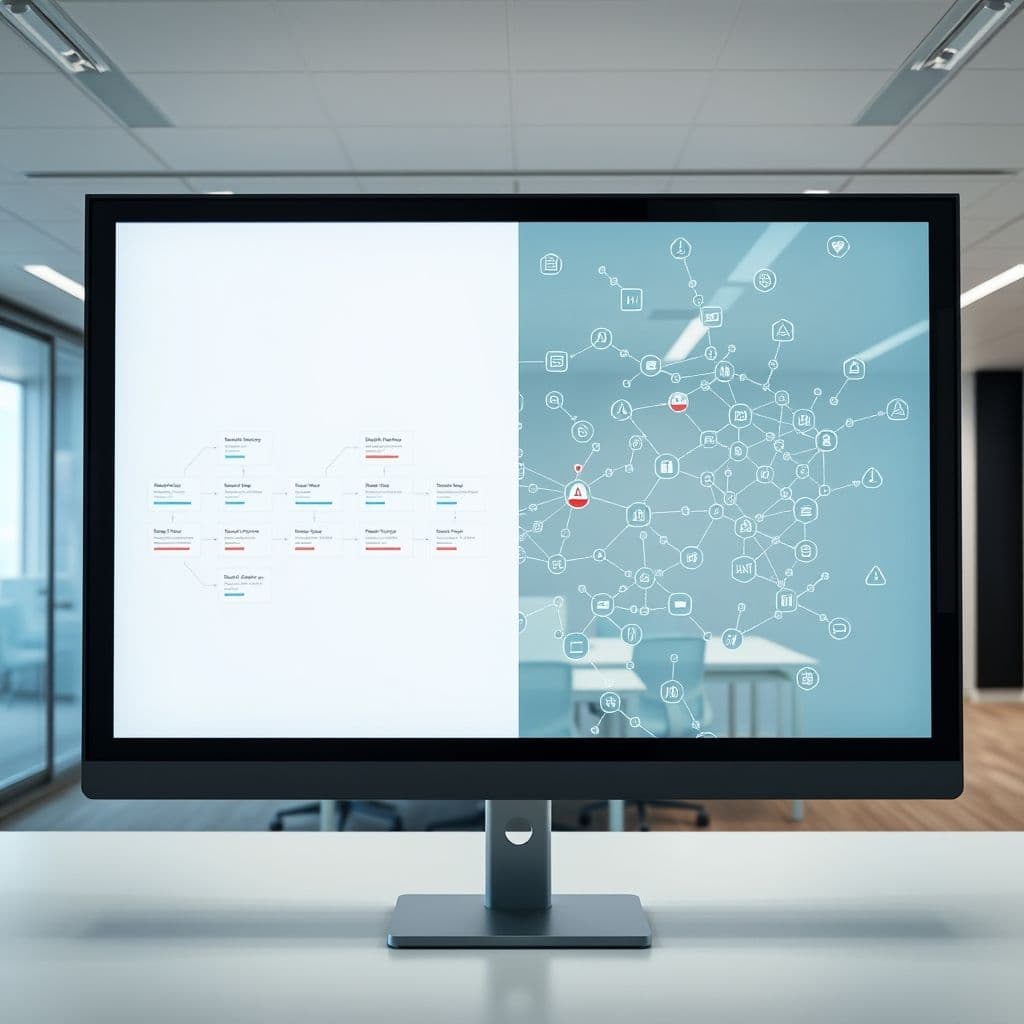Unlocking Smartphone Automation: Solving Location-Based Workflow Challenges

Have you ever tried to set up your phone to automatically open an app when you arrive at work, only to discover it doesn't work unless your phone is unlocked? Or maybe you wanted your child's bus tracker to open automatically on weekday mornings, but found no way to specify days? These frustrations represent a growing pain point in mobile automation that affects millions of users trying to streamline their daily routines.
The Automation Problem: Why Location-Based Triggers Fall Short
The current state of smartphone automation, particularly with location-based triggers, reveals several critical limitations that prevent users from achieving true hands-free efficiency. Native automation tools like Apple's Shortcuts app provide basic functionality but lack the sophistication needed for real-world scenarios. Users consistently encounter three major pain points: the inability to specify days of the week for recurring automations, security restrictions that require devices to be unlocked before actions can execute, and inconsistent app availability within automation menus.
These limitations have real consequences. Parents can't automate school-related apps only on weekdays, employees struggle with work safety apps that require manual sign-in, and countless users abandon automation attempts altogether due to the complexity and partial functionality. The comments from actual users paint a clear picture: 'I gave up because nothing would run unless my phone was already unlocked' and 'I was really excited for this but I don't see any way to specify specific days' highlight the gap between what users need and what current tools provide.

SaaS Solution Concept: Intelligent Mobile Automation Platform
Imagine a hypothetical SaaS platform designed specifically to overcome these automation limitations. This solution would function as a centralized automation hub that connects to your smartphone through a secure companion app, providing enhanced capabilities beyond native operating system limitations. The core innovation would be a cloud-based automation engine that processes triggers and executes actions independently of device unlock status, while maintaining strict security protocols.
The platform could feature advanced scheduling options allowing users to specify exact days, times, and even exceptions for their automations. For the parent who needs their child's bus tracker to open automatically on weekday mornings but not weekends, the system would intelligently recognize patterns and adjust accordingly. The solution would also address app integration issues by providing universal app connectivity through API bridges, ensuring that even apps like Brightwheel that don't appear in standard automation menus can be seamlessly integrated into workflows.
Potential benefits include true hands-free operation regardless of device lock status, intelligent pattern recognition for smarter automation suggestions, cross-platform compatibility between iOS and Android, and a user-friendly interface that makes complex automations accessible to non-technical users. The system could learn from user behavior to suggest new automations, creating a continuously improving personalized efficiency ecosystem.

Practical Use Cases and Implementation Scenarios
The potential applications for such a platform are extensive and address the specific frustrations voiced by users. For working professionals, the system could automatically open time-tracking apps when arriving at the office, but only on workdays and during business hours. Parents could create sophisticated school-related automations that trigger different actions based on day of the week, time of day, and specific locations like school, daycare, or extracurricular activities.
Home automation enthusiasts could integrate location triggers with smart home systems, turning on lights and adjusting thermostats when arriving home, but with exceptions for vacation periods. The platform could also serve users with attention challenges by creating reliable external reminders and triggers that compensate for working memory limitations, exactly as mentioned by the user with ADHD struggling to follow automation instructions.
Conclusion
The gap between current mobile automation capabilities and user needs represents a significant opportunity for innovation. While native phone automation tools provide a foundation, they clearly fall short in addressing real-world complexity around scheduling, security, and app integration. A dedicated SaaS solution could bridge this gap by providing the intelligence, flexibility, and reliability that users desperately need to truly automate their mobile experiences and streamline daily routines.
Frequently Asked Questions
- How technically complex would it be to develop this type of automation platform?
- Developing a comprehensive mobile automation SaaS would require significant technical expertise in mobile development, cloud infrastructure, security protocols, and API integrations. The biggest challenges would involve maintaining security while bypassing device lock restrictions, ensuring reliable location tracking without excessive battery drain, and creating universal app connectivity solutions. However, advances in mobile technology and cloud computing make such a platform increasingly feasible.
- Would this solution work for both iOS and Android devices?
- A well-designed SaaS platform could potentially support both major mobile operating systems through companion apps tailored to each platform's specific capabilities and restrictions. The cloud-based automation engine would handle the complex logic independently, while the mobile apps would focus on trigger detection and action execution according to each operating system's guidelines and limitations.
- How would this platform address security concerns with automation triggers?
- Security would be paramount, particularly for actions that execute without device unlocking. The hypothetical solution would likely employ multiple authentication layers, context-aware security protocols that consider factors like trusted locations and behavioral patterns, and user-configurable security settings that balance convenience with protection. All sensitive actions would require explicit user permission and could include additional verification steps for high-risk operations.


